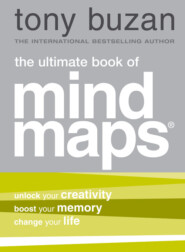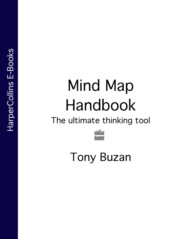По всем вопросам обращайтесь на: info@litportal.ru
(©) 2003-2024.
✖
The Power of Creative Intelligence: 10 ways to tap into your creative genius
Автор
Год написания книги
2018
Настройки чтения
Размер шрифта
Высота строк
Поля
lying on the beach
when ‘idly’ doodling
In what state are your body and mind at such times? Relaxed, and often alone.
It is in these rest-periods that the two sides of your brain are able to converse and communicate with each other, and when the vast wellspring of your creativity is allowed to express itself.
If you don’t decide consciously to take these breaks, your brain will decide for you. Many ‘hard working’ (but not ‘smart working’) people report that, as the years go on, they become more stressed and their concentration begins to wander. This is actually a good thing, for it is their right brains insisting that a little bit of imagination and fantasy should be allowed in to balance an unbalanced state.
If you are in this situation and you continue to persist in pushing your left-brain-dominant lifestyle, your brain will make you take other kinds of breaks, ranging from losses of concentration, to mini-breakdowns in which you become unreasonably irascible, to full blown blow-outs where the only cure is … rest and relaxation!
Do it consciously. Give your brain and yourself a break. Your Creative Intelligence will love you for it.
4. Go for Long Walks or Rambles
The Romans had a special phrase, solvitas perambulum, which can be roughly translated as ‘solve it while you walk’. What they had realized, although obviously not in left/right-brain terms, was that if you take your brain for a walk, especially outside in the country, the steady rhythm of your limbs’ movement, the regular rhythm of your heart pumping more strongly, doses of oxygen-filled blood flowing into your brain, and the feast that your eyes, ears and other senses have while you walk, all contribute to creative thinking and problem solving.
If you have a creative task or problem upon which you are working, ‘Walk it Out’ and you’ll ‘Work it Out’!
5. Be Creative in your Everyday Life
Using a pen and paper, list those areas in your everyday life that you think are creative, and those that you think are not creative. When you have finished, read on.
The ideal answer to the above exercise is that all aspects of your daily life are intrinsically creative, and that all of them can be enhanced by applying more of the full range of your left and right-brain skills. Consider the following everyday activities; they are all dependent upon Creativity:
cooking
decorating
D.I.Y. and home improvements
photography
gardening
route finding and map reading
carpentry
flower arranging
budgeting for special events/expenses
relationships
gift wrapping
letter and message writing
setting a table
arranging house plants
looking after and training pets
planning holidays and special events
planning meetings
playing football, or any other sport
Each one of these activities can be made more interesting and creative by adding the ‘spices’ of the left and right-brain skills.
In this creative arena, little things can mean a lot. Gathering shells and driftwood from a beach and displaying them in your home, or using it for wood-turning; making patchwork quilts from a multitude of scraps of otherwise useless material; decorating your dinner table by putting a flower on each person’s plate and using shells from the beach from which to serve your salt and pepper; or finding new and different routes to get to work each week, are all things that take little effort, and which add immeasurably to the creative feel of your life.
Holiday times and seasonal celebrations especially, are wonderful opportunities for displaying your Creative Intelligence. Make it a Creative Feast with decorations, visual beauty and visual humour. Create your own cards and gifts to give to people, or plan a dinner party for your friends – the possibilities are endless!
6. Your Mastermind Group
All the great creative geniuses had heroes or heroines to whom they looked for inspiration. Alexander the Great had his tutor Aristotle; Julius Caesar had Alexander the Great; all the great geniuses of the Italian Renaissance had the examples of Classical antiquity; the Russian Empress Catherine the Great looked to Peter the Great for inspiration; Mohammed Ali had Sugar Ray Robinson; Isaac Newton had Socrates; Stephen Hawking had Isaac Newton, and so on, throughout the pantheon of genius.
The technique the creative greats used was to hold imaginary conversations with their heroes, asking them for ‘thoughts’ and inspiration. This Creative Thinking technique can be used for pursuing mighty scientific and cultural goals, and it can also be used by everyone in their normal daily lives.
I have personally found this technique exceptionally valuable in my life, and have used it successfully for over 20 years. It has allowed me to be especially creative whenever I have encountered any major opportunity or problem. The way I use this technique is as follows: when confronted with a situation which requires help from my Mastermind Group of heroes and heroines, I select the ones who are most appropriate for the given situation and I then imagine what advice each would give me in order to take greatest advantage of the situation. I select my heroes and heroines for their unique creative approaches, for their energy and for their astonishing success, knowing that all of this will ‘feed in’ to me and my own Creative Thinking processes.
Members of my Mastermind Group on whom I regularly call for help are:
Our Creativity guide Leonardo da Vinci, for his boundless Creativity and inventiveness.
Queen Elizabeth I, for her ability to overcome astonishing odds, to be very flexible while at the same time being steadfast, and to learn with incredible rapidity.
Buddha, for his deep exploration of the self, and for his ability to withstand the utmost suffering and deprivation.
Mohammed Ali, for his astonishing originality and creativity, combined with his representation and defence of a minority group.
Morihei Ueshiba, the founder of the Japanese martial art of Aikido. In this art, the Aikido student is taught to turn any violence into tranquillity, while simultaneously remaining steadfast.
Вы ознакомились с фрагментом книги.
Приобретайте полный текст книги у нашего партнера:
Приобретайте полный текст книги у нашего партнера:











